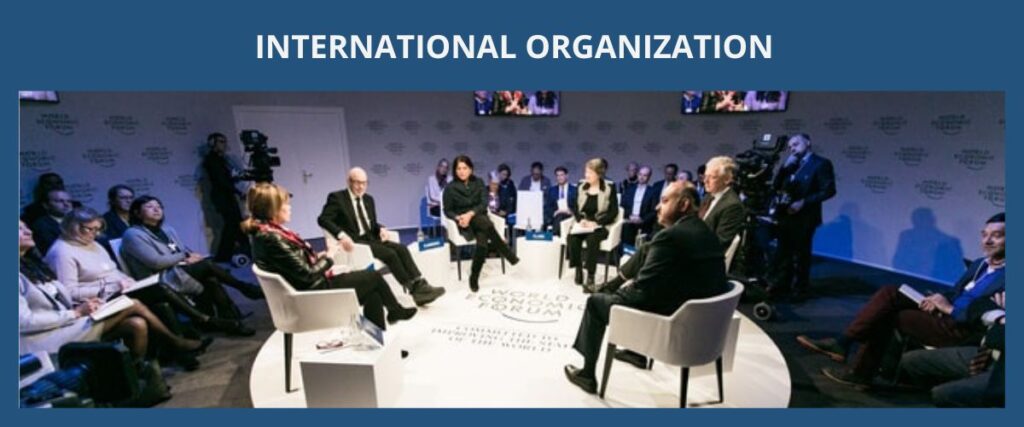A Lawful Permanent Resident (commonly known as a “green card” holder) is a person who has an immigrant visa that allows them to work and live anywhere in the United States. Being a green card holder is also a required step in becoming a U.S. citizen and obtaining a U.S. passport.
One way to obtain a U.S. green card is through an EB4 green card petition where people are qualified for being a special immigrant such as being a retired employee of an international organization, a minister or a nun, a Taiwanese AIT worker, etc. EB4 green card petitions are most commonly filed for religious workers.
EB4 green card petitions do not require an approved PERM labor certification, however, some categories still require a U.S. employer (such as an EB4 green card for religious workers). Form I-360 is filed for EB4 special immigrants except for the U.S. government’s overseas employees who use Form DS-1884 instead. Premium processing is not available to EB4 green card petitions, however, EB4 green card petitions are already relatively faster than other employment-based green card petitions because the PERM labor certification is not required and there is usually no visa availability backlog problems.
Table of Contents
There are thirteen main subcategories under the EB4 visa:
- Religious Workers: Persons who are ministers or in a professional non-minister religious vocation/occupation that will be working for a religious tax-exempt non-profit organization (or one affiliated with a religious denomination) in the United States.
- Retired G4 International Organization Employees (and Certain Family Members): Persons who held a G4 nonimmigrant status and are now a retired employee (or certain family members) of a listed international organization. The retired G4 nonimmigrant with their spouse should file within 6 months of retirement and the person’s unmarried children should be under 25 years old. The spouse and children of a deceased G4 nonimmigrant should file within 6 months of the person’s death.
The International organizations include:
o North Atlantic Treaty Organization (NATO)
o International Monetary Fund (IMF)
o World Bank
o Organization of American States (OAS)
o Inter-American Defense Board (IADB)
o Inter-American Defense College (IADC)
o International Telecommunications Satellite Organization (INTELSAT)
o International Telecommunications Satellite Organization (ITSO)

- Retired Civilian NATO International Organization Employees (and Certain Family Members): Persons who held a NATO-6 nonimmigrant status and are now a retired employee (or certain family members) of the North Atlantic Treaty Organization (NATO). The retired NATO-6 nonimmigrant with their spouse should file within 6 months of retirement and the person’s unmarried children should be under 25 years old. The spouse of a deceased NATO-6 nonimmigrant should file within 6 months of the person’s death.
- Certain Broadcasters: Persons who are broadcasters of the United States Agency for Global Media (USAGM) or a USAGM grantee (Radio Free Asia, Inc (RFA) or Radio Free Europe/Radio Liberty, Inc. (RFE/RL)
- Special immigrant juveniles: Persons who are unmarried and under 21 years old with a state juvenile court order determining that they cannot reunify with their parent(s) because of abuse, neglect, abandonment (or similar grounds under state law) and has been declared dependent (or their custody is placed in a state agency/department or other court appointed person or entity), and returning them to their parent’s pervious country or country of residence would not be in the child’s best interest.
- Employees of U.S. Government or AIT: Persons who have worked over 15 years as an employee of the U.S. government aboard or the American Institute in Taiwan (AIT).
- Military: Persons who after Oct. 15, 1978 were members of U.S. armed forces under a treaty or agreement outside the United States (e.g., Philippines, Marshall Islands, Palau, or Micronesia), or have served 6 years in active duty and re-enlisted for 6 more years.
- Panama Canal Zone Employees: Persons who before Oct.1, 1979 were employed by the Panama Canal Company or Canal Zone government for 1 year or the U.S. government for at least 15 years, or were employed by the Panama Canal Company or Canal Zone government on April 1, 1979 and were employed for at least 5 years.
- Certain physicians: Persons who are physicians that entered the United States on a H visa or J visa before Jan 10, 1978, and have been licensed and practicing medicine continuously since Jan 9, 1978.
- Afghan or Iraqi Employees: Persons who are Afghan or Iraqi translators, interpreters, or persons who have provided aid to U.S. operations.
Other Special Immigrants:
There are three subcategories for other special scenarios under the EB4 visa:
- [SB-1 IV] Returning Residents: Persons who are green card holders (lawful permanent residents) that have been residing outside the United States for over 1 year and is now seeking to reenter the United States.
- U.S. Citizenship Reacquisition: Persons who are former U.S. citizens that have renounced their citizenship in the past but are now seeking to regain their U.S. citizenship.
- Widow(er) of Deceased U.S. Citizen: Persons who are the spouse of a deceased U.S. citizen should file within 2 years of the U.S. citizen’s death.

A person can qualify for an EB4 green card no matter where they are currently residing in the world. In most cases (except retired employees of international organizations, certain physicians, or special immigrant juveniles), there is no prerequisite as to the person being in some type of nonimmigrant visa status (such as an H1B visa, NATO-6 visa, G4 visa) or having an educational degree from a U.S. school. A person who does not have a U.S. degree and has never been to the United States may still able to qualify for an EB4 green card.
The EB4 green card petitions cover a wide range of various types of immigrants. The more commonly known types of immigrants under the EB4 green card petition are religious workers, widow(ers) of U.S. citizens, and retired G4 visa or NATO-6 employees of certain international organizations.
EB4 Religious Workers
Religious workers under the EB4 green card petition must be a minister or non-minister in a religious vocation or occupation that will be performing full-time compensated religious work for a religious nonprofit organization in the United States. During the 2 years immediately prior to filing the EB4 green card petition, the religious worker must have been a member in a religious demonization (that has a non-profit organization in the United States) and worked continuously as a minister or in a qualified non-minister vocation or occupation.
EB4 Retired International Organization Employee (G4 Visa or NATO-6 Visa)
Retired employees of certain listed international organizations must have held a G4 nonimmigrant status or a NATO-6 nonimmigrant status and the person should file their EB4 green card petition within 6 months of retirement. The G4 or NATO-6 retired employee must have physically resided in the United States for at least a total of 15 years before their retirement date and they must have been in their G4 or NATO-6 visa status for at least 50% of the 7-year period immediately prior to filing the EB4 green card petition.
The G4 or NATO-6 retired employee’s unmarried children must file the EB4 green card petition before they are 25 years old. The unmarried child of the G4 or NATO-6 retired employee must also have physically resided in the United States for a total of 7 years between the ages of 5 and 21 years old and they must have been in their dependent G4 or NATO-6 visa status for at least 50% of the 7-year period immediately prior to filing the EB4 green card petition.
The spouse of a deceased G4 or NATO-6 employee should file within 6 months of the employee’s death. The widow(er) of a G4 or NATO-6 employee must also have physically resided in the United States for at least a total of 15 years before the date of their spouse’s death and they must have been in their dependent G4 or NATO-6 visa status for at least 50% of the 7-year period immediately prior to filing the EB4 green card petition.
Unlike other employment-based visa categories, most EB4 green card petitions do not require a PERM labor certification and can be self-sponsored which means that the person can start and pay for the EB4 green card petition by themselves. However, there is usually some other requirement specific to the subcategory under the EB4 green card petition, such as a job offer from a specific U.S. employer for a religious worker or a 15-year physical residency requirement for a retired G4 or NATO-6 employee.

The process for most EB4 green card petitions requires (1) filing a green card petition (Form I-360) with the U.S. Citizenship and Immigration Services (“USCIS”) and (2) a change of status application by either filing an adjustment of status application (Form I-485) with the USCIS or a consular processing application (DS-260) with the Department of State (“DOS“). For overseas employees of the U.S. government, Form DS-1884 is filed and consular processing will be done instead.
Usually, after the approval of the EB4 green card petition (Form I-360), a person who is already residing in the United States will choose to file a Form I-485 application to adjust their current nonimmigrant visa status to a lawful permanent resident (green card) visa status without leaving the United States. The Form I-485 application (“Application to Register Permanent Residence or Adjust Status”) is only available to people who are already in the United States and have maintained their lawful visa status throughout their stay.
A person already residing in the United States also can choose to file a DS-260 application to change into a lawful permanent resident (EB4 green card) visa status by going through consular processing at a U.S. embassy or consulate abroad (usually in the person’s home country). In cases where a person is ineligible for adjusting status in the United States or resides outside the United States, consular processing must be done. Consular processing usually takes place at the U.S. consulate or embassy in the person’s home country, however, under certain circumstances the person can do the consular processing in another country as a “Third Country National.”
An interview for the EB4 green card will be done at a local USCIS office for the adjustment of status or at a U.S. consulate or embassy abroad for consular processing. For a person who is already in the United States adjusting their visa status, the interview approval is the final step in obtaining their EB4 green card.
For a person who is outside the United States doing consular processing, the person must physically enter the United States after the interview approval as the final step to obtain their EB4 green card. In other words, a person who is doing consular processing to obtain their EB4 green card must be admitted by the CBP (“Customs and Border Protection”) officer at the U.S. border (usually done in the secondary inspection room at the airport) for their EB4 green card to be issued.
The main difference between an EB4 green card and a temporary work visa (such as an H1B visa, L1 visa, O1 visa, P1 visa, TN visa, E3 visa) is that an EB4 green card holder can change their jobs freely among different employers or industries without needing additional filings or approvals from the U.S. government. Also, unlike work visas, EB4 green cards are permanent so there is no set maximum time on how long an EB4 green card holder can stay in the United States.
For example, a person with an EB4 green card does not need to file anything new with the USCIS when they change jobs while a person with an H1B visa must have a Change of Employer H1B visa application filed for them because the H1B visa is tied to the specific U.S. employer that is sponsoring the H1B visa itself.
The EB4 visa petition is one of the many ways to obtain an employment-based green card and it is most commonly known as being used for religious workers. The EB4 green card petition is relatively fast because there is no requirement to undergo the lengthy PERM labor certification that is usually required for most employment-based green card petitions and EB4 green cards usually have no visa availability backlog problems.
If you have an EB4 green card (Religious Workers) immigration question, please fill out our contact us form or send us an email with some basic information about your background and your immigration needs. We will do our best to respond within 48 hours.
How we can help?
Kylie Huang Law’s immigration attorney will help identify whether the EB4 green card is the appropriate immigrant visa category for the client’s (or the client’s beneficiary’s) professional background. We will work closely with our client to prepare a convincing case for their (or it’s) EB4 green card petition and we will also strategize on how the EB4 green card petition should be presented to achieve the best chances of approval. It is strongly advised and common practice to retain an immigration attorney for an EB4 green card petition (religious worker green card) due to the complexities in the immigration process and visa requirements.
What does the typical process look like to retain (hire) us?
- Step 1:
- Step 2:
- Step 3:
- Step 4:
- Step 5:
- a.
- b.
- c.
- Step 6:
- Step 7:
- Step 8:
- Fill out the form (with some basic information on what your immigration needs are)
- Sign up and log into the client portal to schedule an appointment online
- Attend scheduled appointment (typically a phone call or zoom meeting)
- Retainment (signing a contract to hire us)
- Start processing case
- Gathering required documents
- Preparing paperwork
- Confirming contents of documents that will be submitted
- Filing the case
- Following up on the status of the case
- Close the case when a final determination is issued
- Step 1:
- Step 2:
- Step 3:
- Step 4:
- Step 5:
- a.
- b.
- c.
- Step 6:
- Step 7:
- Step 8:
- Fill out the form (on what your immigration needs are)
- Sign up and log into the client portal to schedule an appointment
- Attend scheduled appointment (typically a phone call or zoom)
- Retainment (signing a contract to hire us)
- Start processing case
- Gathering required documents
- Preparing paperwork
- Confirming contents of documents that will be submitted
- Filing the case
- Following up on the status of the case
- Close the case when a final determination is issued
- Step 1:
- Step 2:
- Step 3:
- Step 4:
- Step 5:
- a.
- b.
- c.
- Step 6:
- Step 7:
- Step 8:
- Fill out the form (on what your immigration needs are)
- Sign up and log into the client portal to schedule appointment
- Attend scheduled appointment (typically a phone call or zoom)
- Retainment (hire us)
- Start processing case
- Gathering required documents
- Preparing paperwork
- Confirming content of documents that will be submitted
- Filing the case
- Following up on the case status
- Close the case when a final determination is issued

